15 Civil War Part I
Civil War 1861-1863
Jim Ross-Nazzal, PhD and Students
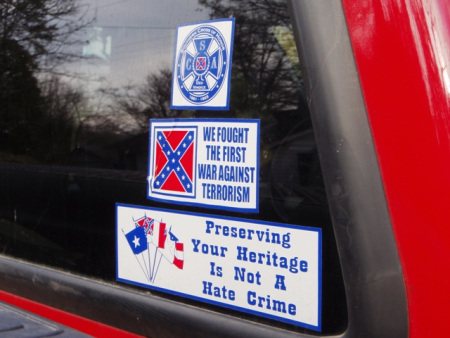
Introduction
On March 21st, 1861, Alexander Stephens (the Vice President of the Confederate States of America) gave what is known as the Corner Stone Speech, in Atlanta Georgia. He said that the Confederate constitution put to bed the slavery question, that slavery split the country, and that slavery is both natural and normal because Africans were inferior to white people. While Abraham Lincoln and Jefferson Davis sidestepped slavery altogether by arguing the coming conflict was about the supremacy of the federal government (Lincoln) or states’ rights (Davis), Stephens said without a doubt that the only issue, the only “right” the states were going to war over, was that of holding human beings in perpetual bondage:
“Our new government is founded upon exactly the opposite idea; its foundations are laid, its corner- stone rests, upon the great truth that the negro is not equal to the white man; that slavery subordination to the superior race is his natural and normal condition. This, our new government, is the first, in the history of the world, based upon this great physical, philosophical, and moral truth. This truth has been slow in the process of its development, like all other truths in the various departments of science. It has been so even amongst us. Many who hear me, perhaps, can recollect well, that this truth was not generally admitted, even within their day. The errors of the past generation still clung to many as late as twenty years ago. Those at the North, who still cling to these errors, with a zeal above knowledge, we justly denominate fanatics. All fanaticism springs from an aberration of the mind from a defect in reasoning. It is a species of insanity. One of the most striking characteristics of insanity, in many instances, is forming correct conclusions from fancied or erroneous premises; so, with the anti-slavery fanatics. Their conclusions are right if their premises were. They assume that the negro is equal, and hence conclude that he is entitled to equal privileges and rights with the white man. If their premises were correct, their conclusions would be logical and just but their premise being wrong, their whole argument fails.
I recollect once of having heard a gentleman from one of the northern States, of great power and ability, announce in the House of Representatives, with imposing effect, that we of the South would be compelled, ultimately, to yield upon this subject of slavery, that it was as impossible to war successfully against a principle in politics, as it was in physics or mechanics. That the principle would ultimately prevail. That we, in maintaining slavery as it exists with us, were warring against a principle, a principle founded in nature, the principle of the equality of men. The reply I made to him was, that upon his own grounds, we should, ultimately, succeed, and that he and his associates, in this crusade against our institutions, would ultimately fail. The truth announced, that it was as impossible to war successfully against a principle in politics as it was in physics and mechanics, I admitted; but told him that it was he, and those acting with him, who were warring against a principle. They were attempting to make things equal which the Creator had made unequal.”[1]
So, according to Stephens, the Confederacy was established on the truism that God created Africans to be inferior to and enslaved by white people. That’s the heritage of the Confederacy, according to the Vice president of the Confederate States of America.
Anyhow, Lincoln left Illinois and headed to Washington, DC. He spoke vaguely on the situation. Many in the North believed that Seward would deal with the crisis because he was Lincoln’s Secretary of State and many northerners viewed the Confederacy as a foreign power. On March 4th, 1861, Lincoln gave his first inaugural address. Historian James McPhereson argues that Lincoln’s first inaugural address was his most significant speech of his life. In that speech Lincoln promised to protect the integrity of the country and would support the Constitution, which allowed slavery to exist. Southerners did not buy it.
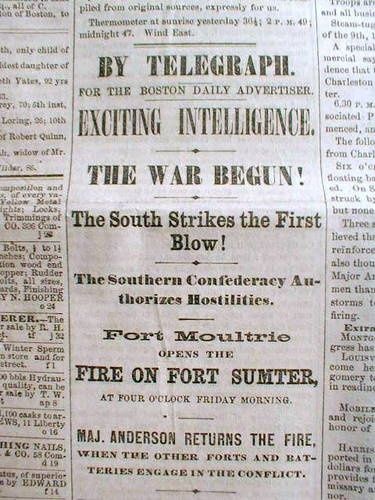
A few days after Stephens’ speech, Lincoln gave his first inaugural address, which Eric Foner called the most “momentous” speech in US history. He went on:
Addressing a crowd of 50,000, in a voice described by a reporter as “clear and emphatic”, Lincoln went to great lengths to allay southern fears that his administration would endanger the South’s property in slaves and attempted to rally northerners and southern unionists to the support of national authority.
The heart of Lincoln’s address consisted of a lengthy repudiation of the right of secession and an affirmation of national sovereignty and majority rule. Lincoln insisted that the nation had been created by the American people, not the states, and that no state could unilaterally dissolve it. Lincoln couched his argument as a defence of a basic principle of democracy – that the minority must acquiesce in the rule of the majority. Secession was not only illegal, but would lead to an endless splintering of authority as disgruntled minorities seceded from polities they deemed oppressive.
Plainly, the central idea of secession, is the essence of anarchy.
Lincoln insisted at the outset that he had neither power nor inclination to interfere with slavery where it already existed. Yet, when he identified the central issue of the controversy, he declared:
One section of our country believes slavery is right, and ought to be extended, while the other believes it is wrong, and ought not to be extended. This is the only substantial dispute.
On this issue he remained unwilling to compromise, though the address closed with an eloquent appeal for reconciliation:
The mystic chords of memory, stretching from every battlefield, and patriot grave, to every living heart and hearthstone, all over this broad land, will yet swell the chorus of the Union, when again touched, as surely they will be, by the better angels of our nature.
Reactions to the speech reflected the deep national divide. Northerners of all parties praised its appeals to national unity. But if Lincoln thought his address would persuade secessionists to abandon their ways, he was sorely disappointed. To Confederates and their supporters, the speech amounted to a decision for confrontation.
The black abolitionist Frederick Douglass, meanwhile, chided Lincoln for failing to take a forthright antislavery position. But, he added, while Lincoln complained that his intentions had been misunderstood in the South, the real problem was that “the slaveholders” understood him all too well. Secessionists knew that, with his election, “the power of slavery” in the federal government had been broken. Lincoln’s election, without a single vote in most of the southern states, indicated that the North now constituted a self-conscious national majority. Here, Douglass suggested, lay the real cause of secession. In his closing remarks, Lincoln said:
In your hands, my dissatisfied fellow countrymen, and not in mine, is the momentous issue of civil war.
Within a month, the Confederacy chose war.[2]
It is no coincidence that God’s favorite “country” would be once protected by Chuck Norris as a Texas Ranger… in Hollywood.[3]
Just before the start of the American Civil War on February 1, 1861 Texas seceded from the Union and joined the Confederate States of America on March 5.[4] This tragic war cost the lives of more Americans than any other war.[5] Texas had to defend itself on multiple fronts and against multiple enemies while supporting the Confederacy. The Texas Rangers proved to be a valuable asset during these troubling times, protecting their homeland and fighting on the frontline.
In 1823 during the initial settlement of Tejas, Stephen F. Austin hired 10 men to defend the colonists from Native Americans; they became the first unofficial ranger outfit. It wasn’t until 1835 during the Texas Revolution, that the Provisional Government of Texas authorized the official establishment of Texas Rangers.[6] Their duties of repelling attacks and defending settlers from Native Americans continued. One other task they would assume is assisting the Texian Army in fighting against the Mexican Troops for independence.
At the time of the Civil War, Texas had the geographical disadvantage of having Indian Territories, Mexico, and coast lines covering the majority of their borders. Most of the Native Americans were still very hostile and tensions between Mexico were never really settled. So, with barely any friendly neighbors and the Federal Navy placing a blockade in the Gulf of Mexico; retreat was nearly impossible.[7] The draft for service into the Confederate Army left the state critically unarmed and vulnerable. Then when the Federal Army abandoned their forts, invaders had full rein to attack and retake territory. The number of forts left abandoned were 18 covering about 500 miles of border lands.[8] The Texas Rangers, now called the Ranger Frontier Regiment, rose up again as the defenders of the state. These men also had the duty to search for Confederate Army deserters. With the vast amount of frontier land to hide in, able bodied men sought the opportunity to dodge the draft. The Rangers had to watch for Native Americans from the dangerous Comanche and Kiowa tribes, as well as Federal soldiers advancing from the north.[9]
Much like other states which were part of the Confederacy, Texas volunteered its own “Texas Ranger” cavalry. Known as Terry’s Texas Rangers, this outfit carried the already famous title “Texas Ranger” to the front lines. Though not all of these men were actual Rangers that defended their homeland, they certainly fulfilled the stereotype and carried their popularity. Benjamin Franklin Terry would lead these men to fight against the Union with the Army of Tennessee led by General Braxton Bragg.[10] They were a unique force to combat and lead; their informal and reckless behavior stood out above other calvary units. These Texas Rangers were skillful in horseback riding and shooting, but their unconditional commitment to the rebellion was most valuable. Often the Rangers were used as shock troops in the beginning of a battle and even conducted covert missions behind enemy lines in disguise. Terry’s Texas Rangers fought in over 6 major battles and honorably served until the final surrender of Bragg’s Army.[11]
Just as the Texas Ranger Chuck Norris would face an overwhelming enemy force with little assistance, the Texas Rangers kept Texas safe and served valiantly for the Confederacy. During the Civil War, the number of casualties taken by the Confederates was just over a quarter million and nearly 400 Texans were killed or kidnapped by Native Americans in Texas. Comparing the amount of ground fought for during the war to the huge open land of Texas, the Texas Rangers were a force to be reckoned with.
Fort Sumter Crisis
Fort Sumter was running out of supplies and may have to surrender to South Carolina. Immediately after the inauguration Seward met with Confederate leaders and assured them that Sumter would be evacuated, then the Confederate representatives went home and spread the news to their leaders in the South. The problem with Seward’s pledge was that he never received approval from Lincoln or never told Lincoln about his pledge. So, Lincoln’s actions thereafter are blind to Seward’s promise to Confederate leaders.
About ten days later, Lincoln asked his Cabinet if he should order the resupply of Sumter. Everyone says no, except for the Postmaster General, Montgomery Blair. In the meantime, Lincoln floated various trial balloons to try to reassure Confederate leaders that he will allow slavery to exist where it existed. And, one of Lincoln’s contacts in the South told Lincoln that the South will attack the fort if Lincoln tries to resupply the fort. Eventually Lincoln shared that information with his Cabinet. By the end of March Lincoln asked his Cabinet, again, about resupplying the fort. This time everyone says yes, except for Seward. Lincoln’s cabinet may had switched their minds after they became aware that the South is willing to fight over Sumter, thus the US could declare that they were the victim to southern aggression, which would make it easier to gain (and maintain) support for the war among northerners.
On April 1st, Seward is in trouble. He told Confederate leaders that Lincoln would evacuate the fort and by April 1st he knew that the Cabinet had reversed itself and was thus willing to go to war. So, Seward came up with a plan. He sends Lincoln a memo suggesting that the US launch a war against England, France, Spain, and Russia. Such a war would result in the South rushing back to aid the North, thus unifying the country over a bigger enemy than slavery or political power. Lincoln says no.
Shortly thereafter, Lincoln meets with John Baldwin, a unionist from Virginia. Baldwin asks Lincoln if he would evacuate Sumter if Virginia voted to stay in the Union. Simultaneously, Lincoln notifies the governor of South Carolina that he is sending a resupply ship to Sumter. Three days later, on April 9th, 1861, Jefferson Davis orders South Carolina to open fire on Fort Sumter. Three days after the shelling began, Sumter surrenders. Then three more days after that, Lincoln called up 75,000 troops for a 90-day stint in the US Army. Clearly Lincoln expected the conflict to be brief.
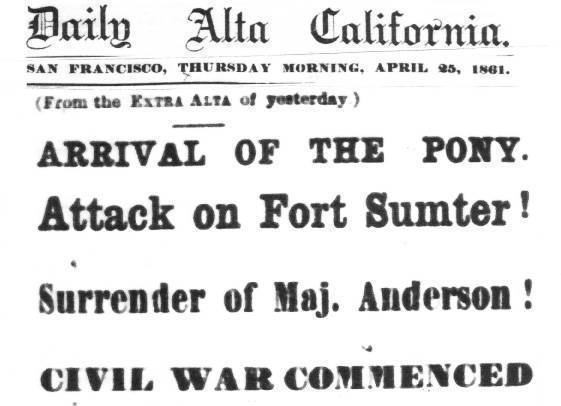
James McPherson deals with three interpretations of the events from Lincoln’s inaugural address to April 9th, when the Confederacy initiates hostilities against the Union at Fort Sumter. First, Lincoln manipulated the Confederacy to attack. That way Lincoln could remind Americans that the Confederacy started the war, that the US were the victims of secession aggression. Second, Lincoln hoped for peace but was willing to fight. And, third, Lincoln hoped to maintain peace but expected war.
After Sumter, Virginia, Tennessee, North Carolina, and Arkansas joined the Confederacy. That made 19 Union states versus 11 Confederate states.
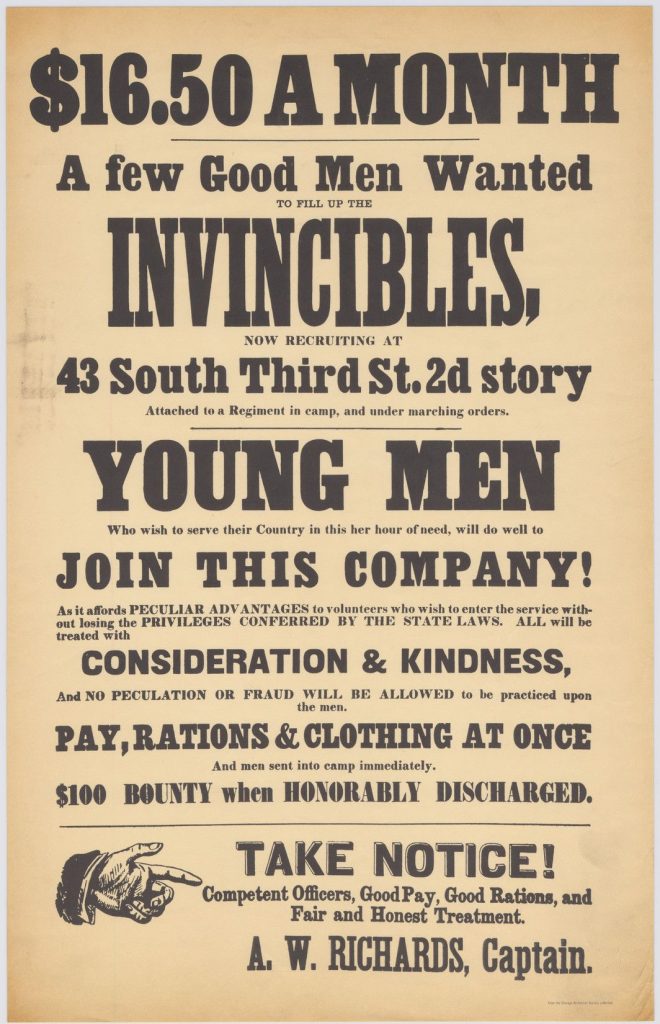
Reasons why the Union thought they would win the war:
According to the 1860 census, there were 21 million in population with 4 million men between 18 and 45 (the fighting age), while the Confederacy had only 9 million total (plus 3.5 million slaves) in population and around one million white men of fighting age.
110,000 manufacturing establishments in the North versus 18,000 in the South.
1.3 million industrial workers versus 110,000 workers in the South.
New York alone had four times the industrial output of all of the Confederate states combined.
The North had 22,000 miles of railroads while the South had 9,000 miles of railroad.
There were 1,421 banks in the North who could help pay for the war versus 231 banks in the South.
So why did the South think they could win?
King Cotton: Europe depended on US cotton; southern economy stronger than northern economy. There was a hope that England would recognize or maybe even fight with the Confederacy.
The South is united: The South consisted of nonpartisan (only Democrats) governments while northern governments were divided (Republicans, Democrats, and other minor parties). High tariffs in New England versus low tariffs for western farmers would result in squabbling or even economic warfare in the North leading to the Midwest to secede from the Union. Some northern Democrats (such as Clement Vallandigham who had pro-slave sympathies) led anti-Lincoln activities while there existed a general dissatisfaction with immigrants in the North.
Southern Leadership: Most presidents were southerners. Most Supreme Court judges were southerners. Most military leaders graduated from the Virginia Military Institute (more than West Point). In other words, the South had the brains.
Virginia: When Virginia voted to leave the Union, that action added psychological legitimacy to the Confederacy. Virginia was home to such Revolutionary War leaders such as George Washington, Thomas Jefferson, and James Madison.
Miscalculation: Southerners believed that the War would be long and that Yankees were interested in running their shops, not fighting a long war. Actually, both sides believed that the other side would not actually fight.
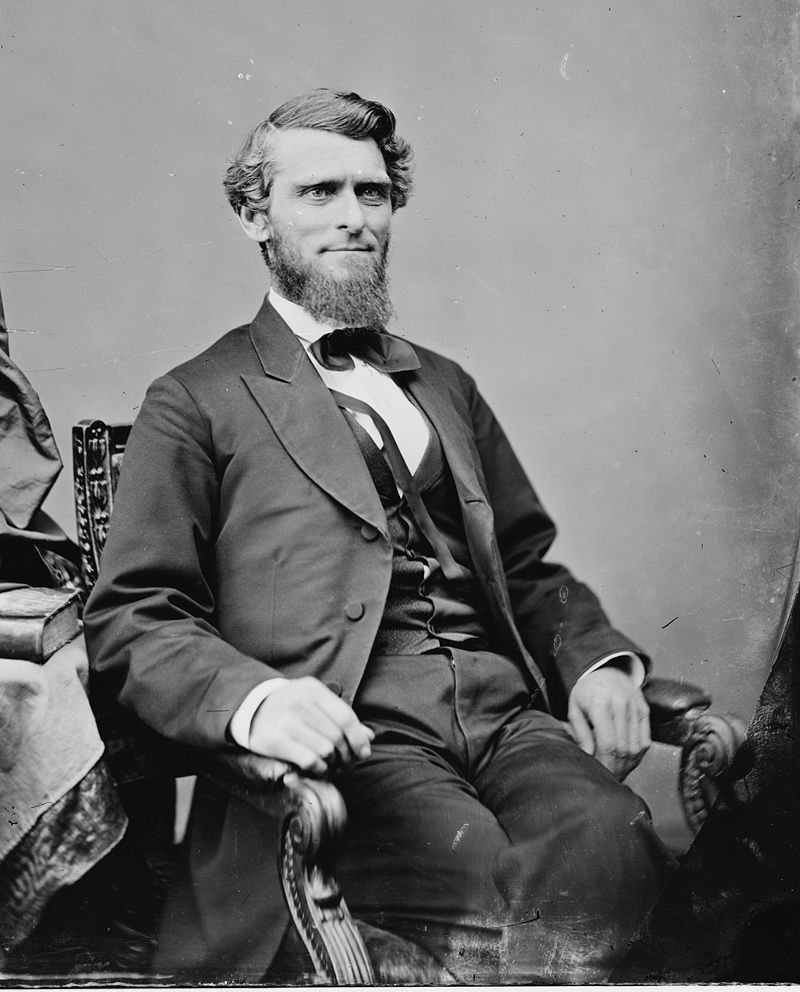
Divisions within the Country
After the Fort Sumter crisis, secession conventions met, voted on, and left the Union in Virginia (April 17th), Arkansas (May 6th), Tennessee (May 7th), and North Carolina (May 20th). The biggest division of families took place in the upper south. Unlike the deep South, some people in the Union while others bolted for the Confederacy. For example, Robert E. Lee joins the Confederacy while his sister and her husband remain in the Union. Lee’s brother-in-law was a Union Army officer. Lee wrote a letter to his sister. He also wrote a letter to President Lincoln who offered Lee the head of the Union Army. After his home state of Virginia voted to secede from the Union, Lee submitted his letter of resignation to Lincoln. Lee’s letter to his sister, Anne Marshall, who lived in Baltimore, dated April 20th, 1861 included the following passage:
“With all my devotion to the Union, and the feeling of loyalty and duty of an American citizen, I have not been able to make up my mind to raise my hand against my relatives, my children, my home. I have therefore resigned my commission in the army, and save in defense of my native state… I hope I may never be called upon to draw my sword.”
Lee’s letter of resignation from the US Army included the following passage: During the whole of that time, more than 30 years, I have experienced nothing but kindness from my superiors, & the most cordial friendship from my companions. To no one Genl have I been as much indebted as to yourself for uniform kindness & consideration, & it has always been my ardent desire to merit your approbation.
Lee included a similar passage in his letter of resignation to Jefferson Davis following the loss at Gettysburg in 1863: I have no complaints to make of any one but myself. I have received nothing but kindness from those above me, and the most considerate attention from my comrades and companions in arms. To Your Excellency I am specially indebted for uniform kindness and consideration. You have done everything in your power to aid me in the work committed to my charge, without omitting anything to promote the general welfare. I pray that your efforts may at length be crowned with success, and that you may long live to enjoy the thanks of grateful people.
There were other division in the Union, such as in Delaware, a slave state that stayed in the Union due in part because the state was tied economically to the North. There were strong secessionist feelings in Maryland and it was unclear which way the state legislature would vote so on April 9th elements of the Union army travel to Baltimore and arrested 19 state legislators who had known southern or slave sympathies. Without those 19 votes, Maryland stayed in the Union.
Kentucky sent 75,000 of its sons to fight for the Union and 35,000 to fight for the Confederacy. Kentucky was the birth state of both Lincoln and Davis. And although the state declared itself to be neutral, Lincoln sent William Tecumseh Sherman as a military-political advisor to the governor. Late in 1861, elements of General Leonidas Polk’s Confederate army moved into Kentucky which the pro-Union legislature declares to be a hostile act so Lincoln sent federal troops (led by Ulysses S. Grant) to hold the Mississippi and Ohio rivers. Eventually, Kentucky joined the Union.
85,000 Missourians joined the Union army with 30,000 fighting for the Confederacy. The pro-Confederate governor, Claiborne Jackson, sent up a military camp in St. Louis where he accumulated arms and troops. The state legislature held pro-Union beliefs so after the Union defeated a Confederate military attachment at the Battle of Pea Ridge (March of 1862), Missouri officially joined the Union.
Although Virginia joined the Confederacy, there was a strong Union sentiment from the people in the western part of the state. In 1861, leaders met in Wheeling to consider seceding from Virginia. Arthur Boreman was the Presiding Officer of that meeting. They ratified a constitution and created a government in a state they called West Virginia. John Pierpont was the state’s first governor. Lincoln does not recognize the state of West Virginia believing that secession was unconstitutional regardless if it’s to join to Confederacy or the Union. However, Lincoln did recognize the government of West Virginia to be the legitimate government of the state of Virginia, thus John Pierpont was simultaneously the Governor of West Virginia and the recognized governor of Virginia.
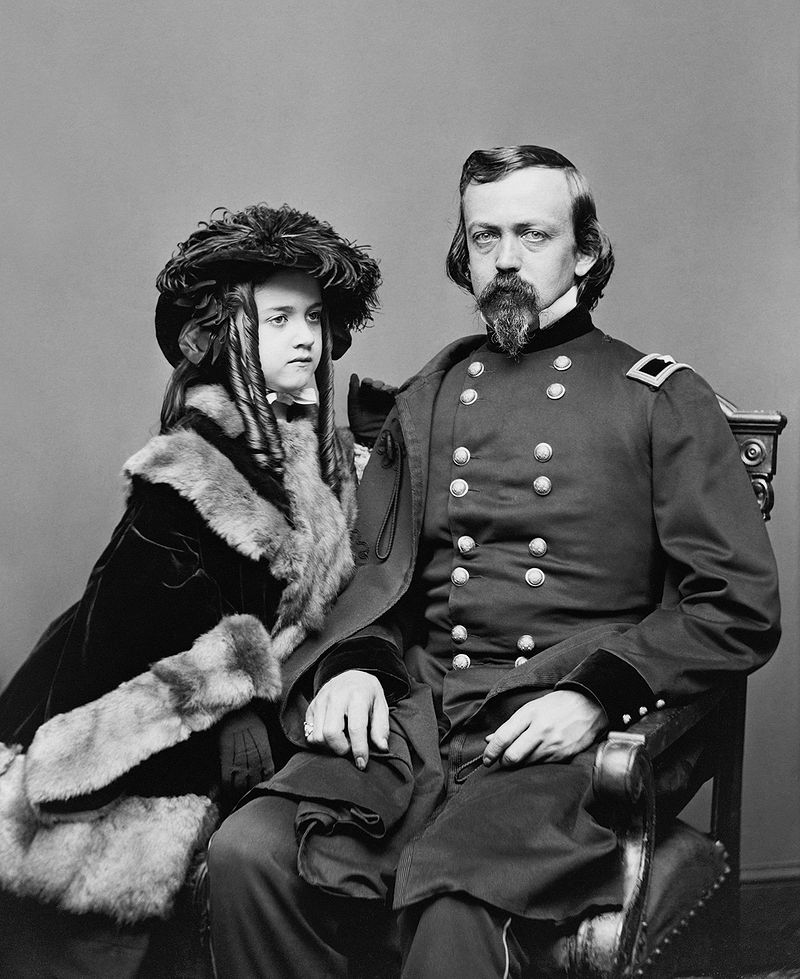
Lincoln had problems
First, he had military problems such Ball’s Bluff (October 21st, 1861). This was a minor engagement along the Potomac. Union forces led by Charles Stone (who were on a raid what he thought was a small Confederate camp) were surprised by a small Confederate force and were defeated. One of the Union troops who died that day was Senator (and colonel) Edward Baker. Baker was a close friend of Lincoln’s and their friendship went back to the Blackhawk War. Lincoln was a supporter of Zachery Taylor’s run for president. Taylor offered Lincoln the position of the territorial governor of Oregon Territory. Lincoln did not accept; however, he did suggest to Taylor that a friend of his, Edward Baker, would be a fine governor.
The death of the US Senator, and close friend of Lincoln, greatly concerned Congress to the extent that Congress created the Joint Committee on the Conduct of the War. Great tension resulted between the Radical Republicans who controlled the Committee and the Union generals who were ordered to testify after losses on the battlefield. Some generals used the Committee to launch attacks against fellow Union generals such as after the Battle of Gettysburg when General Dan Sickles alleged that General George Mead mishandled the battle to the extent that Mead allowed Lee and his forces to slip back into Virginia.
At the Battle of Bull’s Run when Lincoln’s two generals, George McClellan and John Pope, were slow to link their forces due to hostility between the two men, Stonewall Jackson and Robert E. Lee took advantage of the Union’s separated forces and won the day.
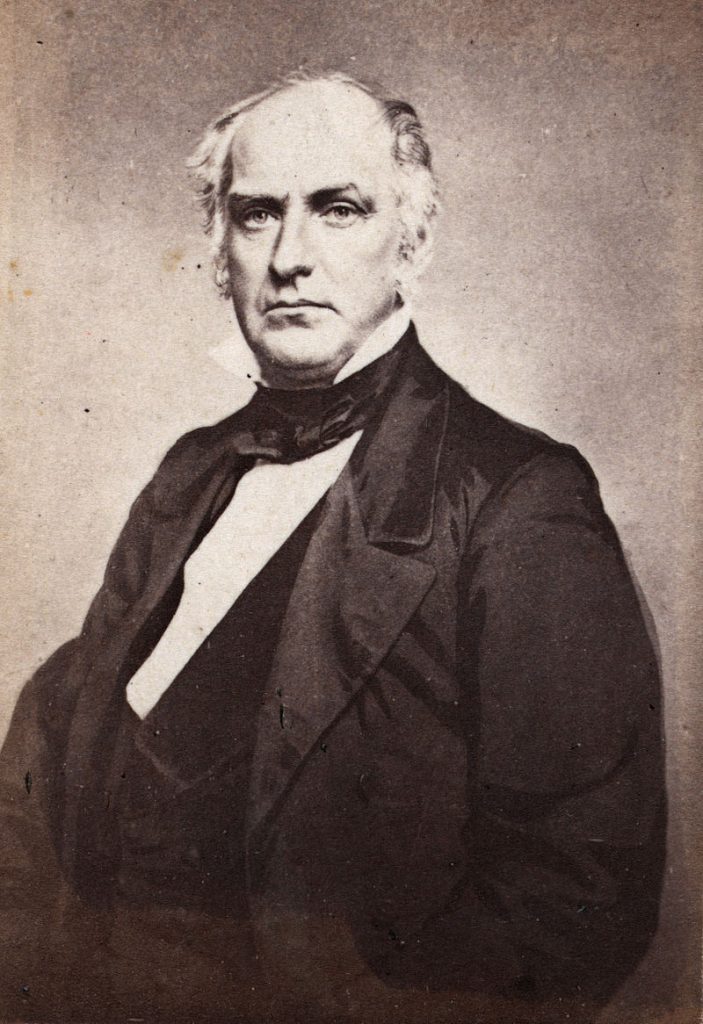
Second, Lincoln experienced political problems. The Committee found Charles Stone guilty for losing the battle of Ball’s Bluff and was imprisoned for 18 months. Some saw the Committee as a vehicle for Republicans to embarrass Democrats. However, some historians argue the positive aspects of the Committee such as the corruption charges levied against Simon Cameron. Cameron was a rival of Lincoln’s who ran for the Republican nomination in 1860. Cameron became Lincoln’s choice for Secretary of War. The Committee discovered that Cameron and his close friends made money off the war by selling faulty weapons and poorly made cloths to the Army. Lincoln sent Cameron to Russia as the US ambassador, where he spent the rest of the War. Edwin Stanton replaced Lincoln in January of 1862. Lincoln and Stanton worked briefly together in 1855 in a court case (McCormick v. Manny).[12] Although Stanton quickly came to like Lincoln, Stanton did not feel that Lincoln was a particularly good lawyer and so Stanton and parted ways, professionally. However, they remained close friends.
The first Republican to run for president, John C. Fremont, became a Radical Republican early in the War. Radical Republicans at the offset of the War demanded that Lincoln recognize that the war was about ending slavery and thus needed to add ending slavery as one of his war aims. As the war raged on, Radical Republicans became more radical so that by the end of the War they were calling for citizenship for the freed slaves. Lincoln appoint Fremont to be the commander of the Western Department (headquartered in Missouri the area consisted of just about everything between the Mississippi River and the Rockies). Shortly after taking command, Fremont issued a proclamation freeing slaves in Missouri. Lincoln asked his to withdraw his proclamation. Fremont refused so in August of 1861 Lincoln fired Fremont. Fremont catches wind of Lincoln’s orders and erects pickets and takes other defensive actions in preparation for a military unit’s attempt to physically remove him. Fremont is replaced by David Hunter. Hunter was also a Radical Republican who eventually issued his own proclamation freeing the slaves. Hunter withdrew his proclamation at Lincoln’s order.
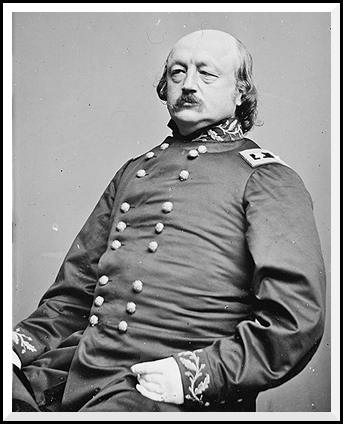
Finally, a wave of emancipation outpaced Lincoln’s war efforts. Ben Butler was a Radical Republican who was appointed general at Fort Monroe in May of 1861. After battles, both sides would return private property back to the other side. Slaves were considered private property so if any slaves fell under the control of Union forces, the slaves would be sent back to the Confederacy after battles. What was not returned to the other side was what was known as contraband. Contraband was stuff that would allow the other side to forward their war efforts such as weapons. General Butler, in 1861, refused to return slaves to the Confederacy calling slaves “contraband.”
In August of 1861 Congress passed what will later be called the First Confiscation Act. This Act authorized commanders to use escaped slaves for labor to promote the war aims of the Union. The following April, Congress abolished slaver in Washington DC with compensation ($300 per slave). Then two months later Congress abolished slavery in the territories without compensation. These actions were in support of the Wilmot Proviso. In July of 1862, Congress passed the Second Confiscation Act aka the pseudo Emancipation Proclamation. This Congressional action declared that slaves are captives of war and forever free. Clearly, Congress, which was controlled by Radical Republicans, was clearly ahead of the president on the issue of slavery.
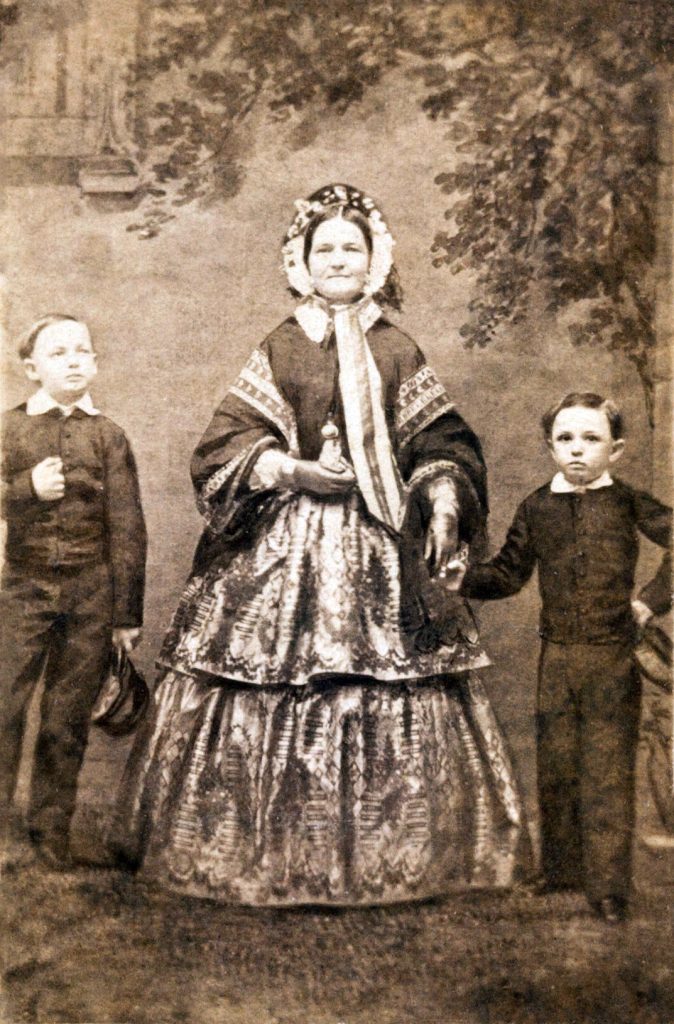
Third, Lincoln experienced personal problems. His son Edward died in 1850. His young son Willie died suddenly of possibly Yellow Fever or Typhoid Fever in 1862, and his youngest son, Thomas (Tad) was physically disabled. His oldest son, Robert, was the only descendant of Lincoln who survived into adulthood. With the death of Willie, Lincoln became insoluble. He withdrew to his bedroom, where he remained for several weeks, possibly suffering from a bout of depression. His wife, Mary Todd Lincoln, possibly suffered from a mental illness. At times, she flew into a rage at the perceived idea that the wives of Union leaders were having affairs with her husband. She also purchased hundreds of pairs of white laced gloves and used the family’s personal resources to redecorate much of the White House. Her spending caused the Lincolns to nearly be bankrupt. However, Ed Stanton got Congress to appropriate funds to pay off Lincolns’ debt. Mary was also the daughter of a Kentucky slave owner, and had family members who served in the Confederate army, which was something that Lincoln’s critics frequently brought up. Several years after she witness her husband’s assassination, Robert had his mother institutionalized for an un-diagnosed emotional condition.
Major Battles
The First Battle of Bull Run (aka Battle of Manassas) took place on July 21, 1861. There were 4,878 casualties and the Confederacy won. The Union’s goal was to take the Confederate capital of Richmond, Virginia. Even members of Congress believed this to be a short war as many came out to watch the battle, some with picnic baskets (and their own slaves). Confederate troops sent the Union troops (and those members of Congress) fleeing back to Washington, DC -about 25 miles away. General McDowell led 30,000 men against 22,000 Confederate soldiers. After the stunning loss Lincoln replaced McDowell with General George McClellan.
McClellan was Lincoln’s problem child of the War. He was born into the upper class. Graduated number two in his class at West Point. Was a highly decorated veteran of the Mexican American War. So much so that the US government sent him to be an observer in the Crimean War. He resigned from the Army in 1857 to join the Illinois Central Railroad where he met Lincoln several times. By 1860 he was the president of his own railroad. He never failed at anything he did and so some historians argue that McClellan may have been afraid of eventually failing, which explains why he will never carry out Lincoln’s orders to seize Richmond.
Lincoln’s personal secretary, John Hay, noted that in November of 1861 the tension between the president and his general. Lincoln wanted to speak to McClellan so Lincoln walked to McClellan’s office in the White House. McClellan’s secretary told the president that the general was busy and asked the president to wait. McClellan did not want to see talk to Lincoln so he climbed out his office window, went home, and went to bed.
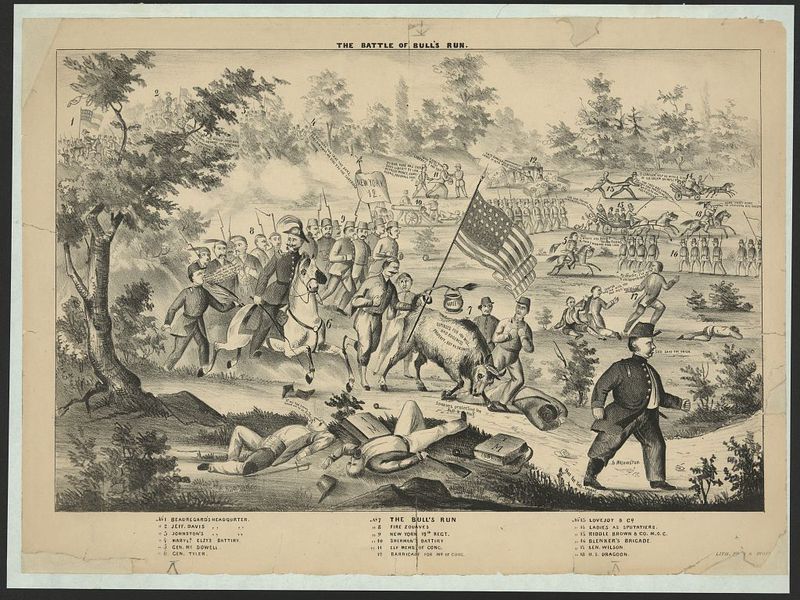
In preparation for the battle of Bull Run, Union troops drilled and drilled and drilled near Washington, DC. A volunteer from Rhode Island, Sullivan Ballou, wrote a letter to his wife dated July 14th, 1861 -one week before Bull Run. Ballou wrote the following to his wife. Note his reasons for joining the Army as well as the ultimate sacrifice he is prepared to give to preserve the Union:
My very dear Sarah:
The indications are very strong that we shall move in a few days – perhaps tomorrow. Lest I should not be able to write you again, I feel impelled to write lines that may fall under your eye when I shall be no more.
Our movement may be one of a few days duration and full of pleasure – and it may be one of severe conflict and death to me. Not my will, but thine 0 God, be done. If it is necessary that I should fall on the battlefield for my country, I am ready. I have no misgivings about, or lack of confidence in, the cause in which I am engaged, and my courage does not halt or falter. I know how strongly American Civilization now leans upon the triumph of the Government, and how great a debt we owe to those who went before us through the blood and suffering of the Revolution. And I am willing – perfectly willing – to lay down all my joys in this life, to help maintain this Government, and to pay that debt.
But, my dear wife, when I know that with my own joys I lay down nearly all of yours, and replace them in this life with cares and sorrows – when, after having eaten for long years the bitter fruit of orphanage myself, I must offer it as their only sustenance to my dear little children – is it weak or dishonorable, while the banner of my purpose floats calmly and proudly in the breeze, that my unbounded love for you, my darling wife and children, should struggle in fierce, though useless, contest with my love of country?
I cannot describe to you my feelings on this calm summer night, when two thousand men are sleeping around me, many of them enjoying the last, perhaps, before that of death — and I, suspicious that Death is creeping behind me with his fatal dart, am communing with God, my country, and thee.
I have sought most closely and diligently, and often in my breast, for a wrong motive in thus hazarding the happiness of those I loved and I could not find one. A pure love of my country and of the principles have often advocated before the people and “the name of honor that I love more than I fear death” have called upon me, and I have obeyed.
Sarah, my love for you is deathless, it seems to bind me to you with mighty cables that nothing but Omnipotence could break; and yet my love of Country comes over me like a strong wind and bears me irresistibly on with all these chains to the battlefield.
The memories of the blissful moments I have spent with you come creeping over me, and I feel most gratified to God and to you that I have enjoyed them so long. And hard it is for me to give them up and burn to ashes the hopes of future years, when God willing, we might still have lived and loved together and seen our sons grow up to honorable manhood around us. I have, I know, but few and small claims upon Divine Providence, but something whispers to me – perhaps it is the wafted prayer of my little Edgar — that I shall return to my loved ones unharmed. If I do not, my dear Sarah, never forget how much I love you, and when my last breath escapes me on the battlefield, it will whisper your name.
Forgive my many faults, and the many pains I have caused you. How thoughtless and foolish I have oftentimes been! How gladly would I wash out with my tears every little spot upon your happiness, and struggle with all the misfortune of this world, to shield you and my children from harm. But I cannot. I must watch you from the spirit land and hover near you, while you buffet the storms with your precious little freight, and wait with sad patience till we meet to part no more.
But, O Sarah! If the dead can come back to this earth and flit unseen around those they loved, I shall always be near you; in the garish day and in the darkest night — amidst your happiest scenes and gloomiest hours – always, always; and if there be a soft breeze upon your cheek, it shall be my breath; or the cool air fans your throbbing temple, it shall be my spirit passing by.
Sarah, do not mourn me dead; think I am gone and wait for thee, for we shall meet again.
As for my little boys, they will grow as I have done, and never know a father’s love and care. Little Willie is too young to remember me long, and my blue eyed Edgar will keep my frolics with him among the dimmest memories of his childhood. Sarah, I have unlimited confidence in your maternal care and your development of their characters. Tell my two mothers his and hers I call God’s blessing upon them. O Sarah, I wait for you there! Come to me, and lead thither my children.[13]
Ballou was killed at the Battle of Bull Run. The letter was found in his pocket. His wife lived the life of a widow until her death in 1914, the year the Great War began.
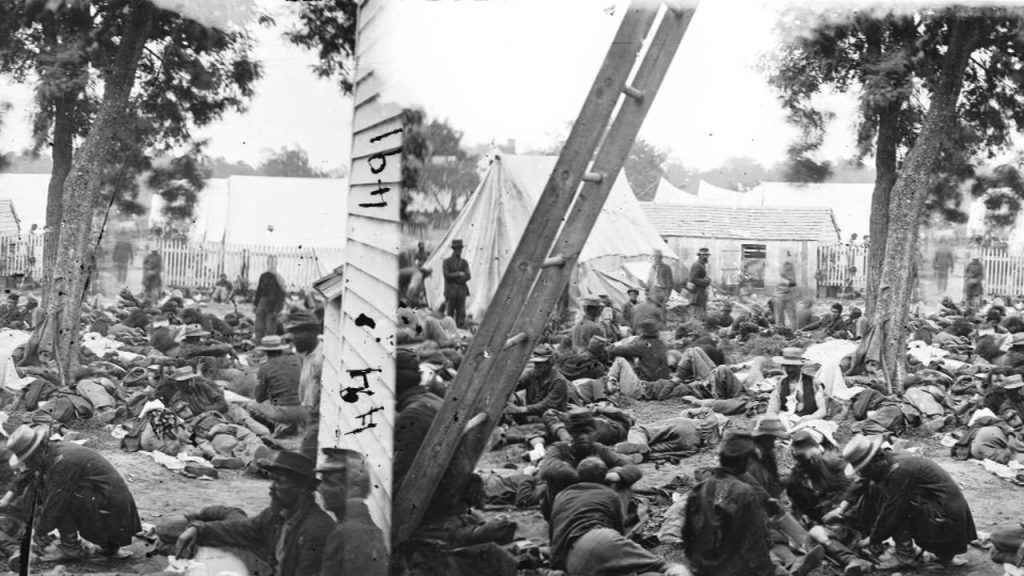
Peninsula Campaign. Early in the War, McClellan refused to tell Lincoln his plans or even where the Union troops are located so Lincoln issues General Order #1, which requires the military to list the location of Union troops and where they will be moved, and their objectives.
Lincoln ordered McClellan to tell him the location of the Union troops as well as McClellan’s plans and objective. McClellan caves and tells Lincoln his plan to sail the Army down the Potomac to Hampton, Virginia and then march to Richmond. Lincoln doubts the success of the operation but authorizes the plan. Some military historians argue that this was Lincoln’s biggest mistake of the War. McClellan leaves DC on March 17th, 1862 with 70,000 men and 3,000 vessels, and takes Yorktown. During the “Seven Days Battles” the Union won most of the engagements but McClellan lost confidence (or nerve) and fled back, asking Lincoln for reinforcements. He almost succeeded in his objective of taking Richmond. The Union army won most of the battles, but eventually Lee drove McClellan back to Hampton, resulting in McClellan’s first great defeat.
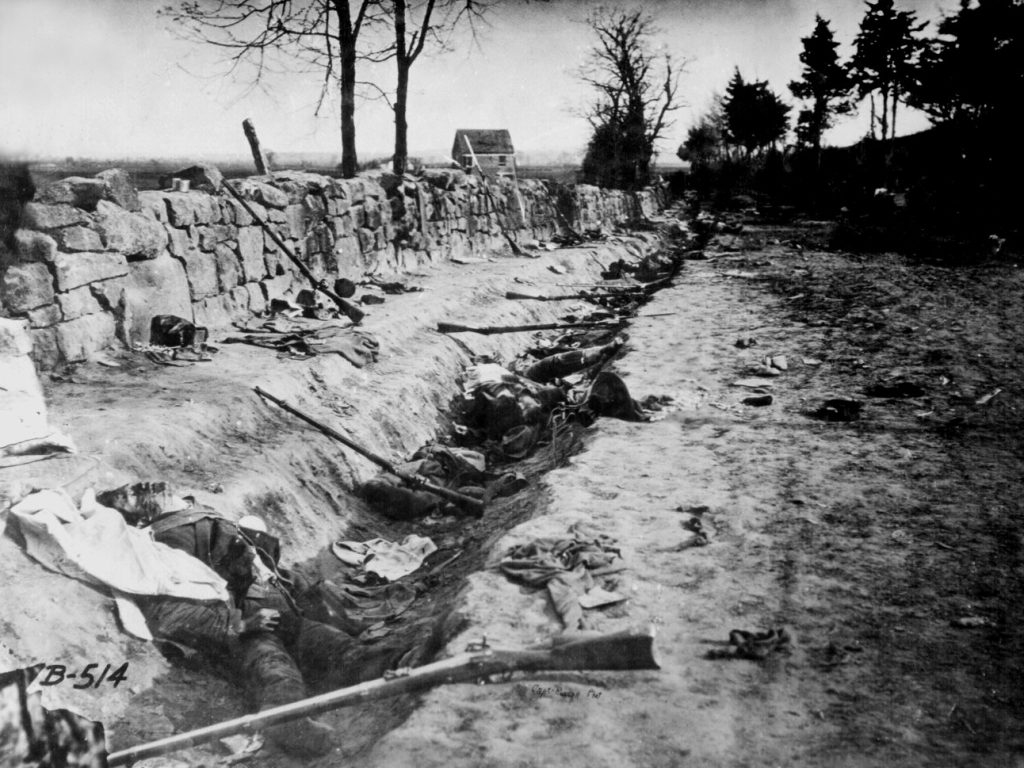
After McClellan’s loss, Lincoln and McClellan engaged is what today would be called a Twitter war (but with the telegraph back then). McClellan telegraphs Lincoln saying if the government does not help, all will be lost. But only he (McClellan) can save the Union despite Lincoln. “You have done your best to sacrifice this Army,” McClellan said. Lincoln fired McClellan.
Battle of Shiloh, 1862 (23,700 causalities). Ulysses S. Grant makes a name for himself while leading 13,000 Union troops in Tennessee. He took heavy loses but refused to withdraw from the battlefield. Lincoln was impressed.
Seven Days Battle (aka the Peninsula Campaign) 36,000 casualties. George McClellan initially, seemingly, refused to take his troops into combat. Lincoln tracked McClellan down and ordered him to attach Richmond. He eventually marches his troops to Richmond, sets up a defensive perimeter, and eventually withdraws back to Washington, DC. He never attacked the Confederate capital. Lincoln begins to regret elevating McClellan.
Antietam, September 17th, 1862. 23,000 casualties in the one-day battle. The bloodiest day in US history. Extremely outnumbered by McClellan’s forces, Robert E. Lee eventually withdraws his troops from Maryland back into Virginia. This was the Union’s first major victory in the Eastern Theater. Congress, with the blessing of Lincoln, will use the victory to declare a new war aim through the Emancipation Proclamation.
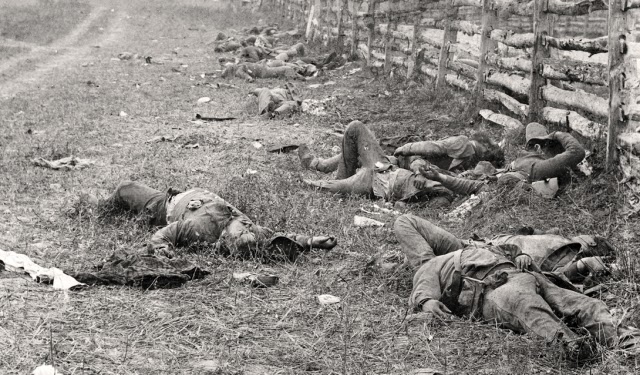
Emancipation Proclamation. Horace Greeley, the editor of the New York Tribune, wrote an editorial to President Lincoln entitled “The Prayer of 20 million.” In it, Greeley asked the president to add to his war aims the freeing of slaves. On August 22nd, 1862, Lincoln responded in the New York Times by saying the war is about saving the Union, not about freeing any slaves, but he hoped that someday all men would be free.
Why was Lincoln moving so slow? The Union was more politically complex than the Confederacy. For example, Radical Republicans were pushing to free the slaves and use freemen in the Army. On the other side, the Copperhead Democrats sought an end to the war and allowing the South to keep their slaves. There was a special referendum in Illinois in 1863. In Lincoln’s old congressional district, the first question: Should blacks be allowed to settle in Illinois. By nearly 3 to 1 the people said no. The second question: If blacks settle in Illinois, should they be allowed to vote? 90% said no.
Singed by Lincoln on October 1st, 1862, the legislation went into effect 90 days later, on January 1st, 1863. The legislation instructed the treasonous states to return to the Union within 90 days. All states which did so got to keep their slaves. If, after 90 days, Confederate states did not return to the Union, then a war aim is added: to end slavery in the Confederate states. The legislation did not affect the slave states (such as Delaware) already in the Union or areas of slave states under Union control. The Emancipation Proclamation was not about freeing slaves. Rather, the legislation was designed to reunite the warring parties and to signal to England that they North is leaning towards ending slavery. Thus, the Emancipation Proclamation was equally foreign policy in the hope of keeping England from joining the Confederacy. A real fear among Union political and military leaders.
Black recruitment then followed.
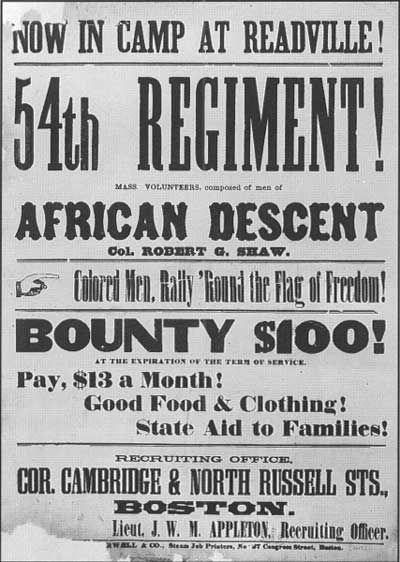
Erik Avalos, in the Spring of 2020, looked at women, suffrage, and the Civil War:
During the early years of the American Civil War, women found it rather difficult for them to have much influence to the war if they were to stay confined to their respective gender roles. In her diary, Sarah Wadley wrote, “We young ladies are all so…useless.”[14] Likewise, a woman wrote to a friend, “I wish I could be of some use to our poor stricken country.”[15] This demonstrates how during the time of civil war, a time when the country was most in need, women saw how short they stood in social status. The want of women to help in the cause is shown more vigorously in Julia LeGrand, who felt, “like a pent-up volcano. I wish I had a field for my energies.”[16] This is an example of how women did feel some sort of oppression and wanted to break out of their respective gender spheres.
Many women did all they socially could and more to support their brethren who were fighting the war, with many of these taking up the new war-necessitated occupation of nursing. About 21,000 women did such work in the Union alone.[17] This shows how the war opened opportunities for many females and allowed them to transcend their gender sphere. Some even began their own women-organized aid societies such as the “Ladies Aiken Relief Association of South Carolina” and the “Women’s Relief Association of New York City”, which sent medicine to their armies.[18] These are good examples of how women took the initiative to help out as much as they could. Another great example is that of Dorothea Dix, an educator and social reformer, who petitioned to the US government to recognize their desire to aid in the war effort.[19] This demonstrates how women, even with good intentions, had to fight against their own government for recognition of their much-needed aid.

Not only did these female patriots have to go against their government to help they also had to battle many social constraints. Elite surgeons thought females would be a hindrance and were resistant to them in the nursing role.[20] According to Sophronia Bucklin, the doctors “were determined by a systematic course of ill-treatment…to drive women from the service.”[21] Georgianna Woolsey also believed this when she wrote that, “no one knew how much opposition, how much ill-will, how much unfeeling want of thought these nurses endured. Hardly a surgeon of whom I can think, received, or treated them with even common courtesy.”[22] For this reason, fearsome women like “Mother Bickerdyke” were called upon to fight the social battles,” I’ll go to Cairo, and I’ll clean things up there. You don’t need to worry about that neither. Them generals and all ain’t going to stop me…”[23] The latter sentence in this quote shows how used she is to men attempting to talk down to her.
The ill treatment of working women did not stop with nurses, so too did female factory workers who were paid a barely living wage finally feel the injustice of gender discrimination. A New York sewing woman protested this:
“A well-known hat manufactory on Broadway wanted five hundred hands. I applied for work. The proprietor…promised me 62 cents per dozen. I knew I could not make a dozen per day; but what was I to do? I wanted work, and must get it, or starve. My mother and myself worked from early morning until late at night, but could not make more than $2.50 each per week…Are we nothing but living machines…”[24]
This demonstrates how women were underpaid and it further shows the fact that these low-class women had little other choice but to accept the abysmal pay. She also states:
“Men join the army and leave us with our employers to battle with. I trust that we will have kind friends to aid us; it is good work. If we were paid better it would save many young girls from worse than poverty.”[25]
This quote shows how the author is almost envious of the men as they go fight for glory while she is forced to stay back and deal with the awful pay of employment and possible starvation. Not only was the pay just enough to not starve the workers to death, but female workers operated in very hazardous environments. Nineteen females died in an explosion at the Washington Arsenal, and women workers were also killed in explosions at Pennsylvania’s Allegheny Arsenal and Connecticut’s Waterbury Flask and Cask company.[26] The fact that women worked with these types of pay and conditions really demonstrates the lengths women would go to get enough pay to not starve. Many who still could not maintain themselves went the other route, “worse than poverty”, as tens of thousands of young women found themselves with no other means of support but to become prostitutes.[27] A man from Columbus, Georgia noted that these women were only offered help, “at the sacrifice of their honor, and by men who occupy high places in church and state.”[28] This shows how women who did become prostitutes were looked down upon. No matter what these low-class women chose, all their paths faced discrimination.
As the American civil war was fought on American soil, there were many encounters of soldiers and civilians of the opposite flags. Of these encounters the most horrid of which were reserved mostly for females, rape. Mary Chesnut of South Carolina writes in her diary:
” I think these times make all women feel their humiliation in the affairs of the world. With men it is on the field-glory, honour, praise and power. Women can only stay at home-and every paper reminds us that women are to be violated-ravished and all manner of humiliation.”[29]
This demonstrates how futile women felt that they must stay back and possibly face sexual violence while the men are out conducting war on each other. It may have even been encouraged to mistreat women in such a manner when General Butler issued his “General Orders, NO 28”:
“…it is ordered that hereafter when any female shall by word, gesture, or movement insult or show contempt for any officer or soldier of the United States she shall be regarded and held liable to be treated as a woman of the town plying her avocation.”[30]
This really demonstrates how society at the time scorned women who were “un-submissive” as General Butler threatened to label them “prostitutes”, should they not comply. The news women received about other unfortunate souls facing rape prompted them to start defending themselves. Sarah Morgan of Baton Rouge wrote in her journal, “Come to my bosom, O my discarded carving-knife, laid aside under the impression that these men were gentlemen”, after she heard of General Butler’s infamous order.[31] Likewise, Julia LeGrand of New Orleans recorded in her diary,” Mrs. Norton has a hatchet, a tomahawk, and a vial of some kind of spirits in which she intends to blind all invaders.”[32] These examples demonstrate the fear women had for the inscrutable act to even prepare to fight should they ever need to.
During the civil war, most women, be it nurses, factory workers, house-keepers, or prostitutes all faced one thing in common, discrimination. Nurses faced ill-treatment, factory workers faced barely-living wages, those that stayed at the house faced possible death or rape, and those who had no other choice resorted to prostitution which was heavily looked down upon. This shared suffering revealed to women nation-wide the injustice of the society that ironically fought a war for equality. It awoke in them a fervor that would go on to unlock rights for them in a grueling battle for equality that can still be felt today. The American Civil War was an extremely important and vital pivot in women’s suffrage as it allowed them to finally see the inequality they lived in as females of all kinds faced discrimination brought forth by the nation ravaging itself in war.

In the Spring of 2020, Jessica Figueroa looked at Mary Boykin Chesnut, an American author well-known for a book published as her Civil War diary, it detailed the Civil War from a southerner’s point of view. Chesnut used the methods she had learned from writing fiction in the descriptive passages, characterization, thematic patterns, and overall structure of the document.
Chesnut began her diary on February 18, 1861, and ended it on June 26, 1865. She is a governor’s daughter and married into a wealthy family and became the wife of a one-time Senator and later Aide to Jefferson Davis, General James Chesnut, Jr.[33] Even though Chesnut was a staunch defender of the Confederate cause, she also spoke openly about her opposition to slavery. She wondered about the fate of slave women whom she once had seen at auctions. In her writing she noted, South Carolina slaveholder as I am, my very soul sickens-it is too dreadful, seeing separate church services for black and whites made her question why all Christians did not talk to one another. Chestnut wondered if it was a sin for a white southern woman to be opposed to slavery, part of her hatred of slavery came from her conviction that caring for the blacks was unprofitable. She also noted another incident where a slave woman was so driven by her master that she took her baby and waded into a raging river to end their lives and escape her sorrows. However, Chesnut had stopped writing in her diary for five months, due to her cousins’ death. Her cousin’s name was Betsey Witherspoon and she was found dead in her bed, she had supposedly died in her sleep, it was later discovered that Witherspoon was murdered by her slaves, smothered with a pillow. Chesnut resumed writing in her diary in February 1862.[34]
Accompanying her husband from Montgomery to Richmond and back to South Carolina, she was at the front of Confederate affairs, listening to high-level rumors, and sharing their personal friends’ secrets and scandals. Chestnut was living at the Mulberry at the start of the Civil War, although the political activities of her husband frequently kept him away from home. While listening to war reports, Chesnut waited for the Confederate soldiers for several hours in her private room sewing shirts. They were in Montgomery as the Confederacy was established with Jefferson Davis as president, in Charleston when the war was declared, and in Richmond, Virginia, for much of the wartime events. At Richmond, Chesnut demonstrated her commitment to the Confederacy by urging her husband to volunteer for the fight, however, he remained committed to the thought of peaceful secession. When Chesnut returned to Mulberry her husband had enlisted and became the aide to Jefferson Davis. At Mulberry, Chesnut spent many hours writing in her diary and sewing shirts for soldiers, also she went out many mornings with packs of provisions for the hospital. In her diary, she wrote about her frustration with her husband and others who were not fighting, if I was a man I would not doze and drink and drivel here until the fight is over in Virginia.[35]
Chesnut once again wrote about the many injustices against the blacks, injustice aggravated by the fears of the war. At the beginning of the war, she tells of a panic about the blacks in another entry in the diary. The white southerners feared that a large number of slave forces would join the side of the North. Chestnut writes about the union attack that leads to the masters lining up the slaves and shooting them to death.[36]
Mary Boykin Chesnut is known for her Civil War diary which it described the Civil War from the southerner’s view. Chestnut was on the Confederates’ side, however, she made herself clear that she opposed slavery. In her diary, she writes about the injustices against African Americans and her journey from Montgomery to Richmond and back to South Carolina.
A Canadian Joins the Fight
During the Civil War, men held the traditional place as soldiers and women were in support positions such as nurses, uniform and apparel laborers, and any role that did not include engaging with the enemies in physical combat. Many women were not satisfied to just serving as care takers and were changing their physical appearance and creating new identities as men to fight alongside men. Though this was forbidden and was punishable by dishonorable discharge, this did not stop many women including a Canadian woman named Sarah Emma Edmonds.
Sarah Edmonds was born in 1841 in Magaguadavic Canada. From birth, Emma and her mother were subject to constant physical abuse by her father who was ill-minded that Emma was not a son. Emma’s older brother suffered from illnesses, and seizures due to severe epilepsy. Her father was hoping for a healthy boy to replace his current son but was not successful. After years of enduring such abuse, Emma was informed her father was organizing an arranged marriage, and at fifteen years old, she packed her belongings and ran away. After freeing herself from her father’s shackles, she found herself at the house of a friend of the family, where she worked as a bible salesman. She would become successful and well-known within the community. Soon, Emma’s father would get word of her whereabouts and demanded she come home to fulfill his promise he arranged to have her married. Fearful of this, Emma would once again pack her belongings and would skip town, marking the beginning of a valent chapter of her life. [37]

When the Civil War began, Emma found her way to Detroit, Michigan, to answer the calls for volunteers where she would live her role as her new identity. After cropping off all her hair, she used a stain to darken her skin, and wore a suit tailored for men, her new alias was “Frank Thompson”. After enlisting, Emma would be assigned as a nurse, and after a few months of training, she was stationed in Virginia under General McClellan’s battalion. After arriving, her life position as a nurse would be soon temporary when General McClellan received news that a spy and a soldier of his was killed in battle. After Emma received the same news, it struck with her that the soldier killed in battle was a dear friend, and now determination of revenge would take over. Emma, or Frank Thompson, went to McClellan and asked to serve as a spy. McClellan agreed, and Frank Thompson was now a Union spy. Her first mission would arrive and would force Edmonds to take on a new identity as a slave to sneak into a confederate’s base. Emma applied Silver Nitrate to her body causing her skin to turn a dark brown. With a wig and dark skin, she snuck into a base owned by the confederates and stayed in the slave’s quarters for a few days receiving valuable information that could alter the outcome of future battles. With a safe return to her home base, she relayed this information to General McClellan. Soldier Frank Thompson would serve eleven more missions as a spy, deeming all successful. [38]
During her last mission, Emma contracted Malaria and forcefully fled the union to seek treatment so her identity would not be exposed. She sought treatment in Cairo, Illinois, and had to stop her second identity after checking herself in a hospital. After treatment, her urge for revenge still lingered, and wanted to reenlist in the union only to find out that Frank Thompson was dishonorably discharged for deserting her post and the union army. Knowing this, she wanted to move on with her life and began to write a fictional biography of her life in 1865, Nurse and a Spy were published and became very successful, selling 175,000 copies. In 1867, she returned to Canada and met and married a carpenter by the name of Linus Seegle. Linus and Emma had three sons who unfortunately all passed away due to unknown illnesses. Wanting to heal, Emma and her husband moved back to the United States where they would adopt two young boys. As life progressed, Emma and her family moved to Kansas where she would start to gather affidavits from her old army comrades to attempt to get pensions for her time served. Not only was she successful at obtaining these documents, but she also received a letter on her behalf from an old captain that read: “She followed that regiment through hard-fought battles, never flinched from duty, and was never suspected of being anything other than what she seemed. This beardless man was a universal favorite.” After submitting all of the appropriate documents, a special act of congress granted Sarah Emma Edmonds an honorable discharge from the army on July 5th, 1884 and in 1897, Emma joined the McClellan post and became the only female member of the Grand Army of the Republic. After enduring all these selfless endeavors, she would contract Malaria again, but would not survive. On September 5th, 1898, Emma died from complications caused by Malaria. She was buried with full military honors. She rests in the Washington Cemetery in Houston, Texas. [39]
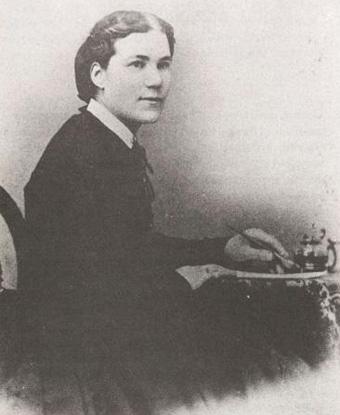
Knowing the punishable act of women assuming a new identity to fight in the war, Emma knew she was bound for something more than repairing uniforms or tending to the needs of men wounded in battle. A quote in her book really can sum up her view of gender roles and the civil war. She wrote: “I think I was born into this world with some dormant antagonism towards men – my infant soul was impressed toward the sense of my mother’s enduring wrongs – and I probably drew from her breast with my daily food, my love of independence and hatred of male tyranny…”. With countless missions served and living a fulfilling life with her family, she deserves, in my opinion, a lot more than what she is given. Without women of her bravery, I suspect the war would have been altered drastically.
Sacrifice
Ruben Dominguez examined what “sacrifice” looked like for Freemen during the Civil War. here are his observations:[40]
Words have a history of their own. Sacrifice is of latin origin, from, sacrafacere, taking sacra’s meaning of sacred, and faceres’ meaning of, to make do. Old French would make this sacrifise.[41] It implied holy sacristy, an offering to a deity in exchange for something, whether it be good fortune, penance, or continuing state of affairs. By 1590, the word had morphed to a broader, more applicable meaning of “giving up one thing for another” and by 1880, the term was casually used in baseball.[42] In essence, sacrifice means to give up something of value, with the expectation of receiving something equally or more valuable. When looking at the subject of interest, Freemen during the Civil War, and “mentalizing” how they would internalize the word sacrifice, we must first define and analyze the most important factors that would influence their perspective. Certainly at least some of the most important factors would be, in no particular order: educational, social, and experiential influences. With this, one may come to a morbid conclusion, but perhaps, maybe just as hopeful. The African American experience, before and leading up to the Civil War, supports the idea that they would see the word sacrifice with apprehension, but that unity and the idea of a better life would allow them to persevere.
Education is important because it is the backbone on which people make informed decisions. An educated person with the ability to apply it is a force to be reckoned with. Unfortunately, black people were subject to the whims of their slave owners, and expectations of their owners would be that they worked, not to be educated. A proper education in general is still sparse, even after the Civil War, only 4% of American children were in school, and colleges were barely beginning to grow in numbers.[43] Not surprisingly, an education is the last thing a slave owner would want their slaves to have, especially after rebellions such as Nat Turners, where over 50 white people were killed.[44] There of course were skilled workers, artisans as they were called, but this is a narrow field of knowledge and did not provide the slave with context to their environment as is education’s most valuable purpose.[45] Most of the education that slaves would have received would have been passed down orally from previous generations, higher order knowledge mainly spoken openly by slave owners.[46] Due to the inherent degradating and demoralizing nature of slavery, it was a burden too heavy to carry alone. Slaves would rely on each other, and operated like families in a systematic way, employing ways of covert and overt resistance.[47] This social aspect will now be developed upon.
For many reasons, individuals are stronger in numbers. Together they can distribute the amount of stress that life brings among themselves, this cooperation leading to better well being overall. Leaders tend to naturally rise above and give peoples a direction to strive for while serving as a role model. Jim Crow America was not fertile ground for these ideals, certainly not for black people. African Americans were given a disproportionate amount of stress with nearly zero growth and representation. Among potential role models, there were few. likely the most notable being Frederick Douglass, who served as one of the main communicators of his races plight. Through his writing he denounced unearned self-righteousness of American symbolism, July 4th Independence Day, being among the most hypocritical.[48] It is hard to say how much exactly the average slave was aware of the social and political climate of the times, which is why the notion should be looked at thoughtfully.
Let me preface the following with the acknowledgment that much of it is speculation. It is almost impossible to not speculate when considering this, and the same will be true for the conclusion that surpasses it, but this is a product of the nature of the very question itself. For clarity’s sake let us start 10 years before the war began. Even just looking at 1850 would entail considering prior events that have happened. There is likely a bell curve of the slave populations age, with many slaves either close to, or getting into their primes. The older among them may have directly heard about America’s expansion and the conflict that has come with that. The younger among them not being excluded, they certainly have been made aware of the growing tension between northern and southern states concerning slavery, and ostensibly, some may even know about the gag orders made in attempt to stifle conjecture about the subject.[49] As already established, slaves would be very vibrantly discussing this, of course with opposition from their masters if the slaves were so careless as to allow them to find out about this. After a point if the system slaves communicated was well adjusted then knowing about these things would be common place. It is possible that there were slaves held by certain slave owners that may be left in the dark, but even they would notice shifts in attitudes and behavior among their keepers. Even when you consider this, it is almost certainly true that the slaves heard about things such as the confiscation acts, which let slaves that were captured stay in the north, and Lincoln’s emancipation proclamation, which was aimed at disarming the South’s reason to fight the war.
When thinking about all the facts, and their very grim nature, it should be almost impossible to assume that the Freeman would be filled with naive joy. If their predecessors had done them justice then they would know that the brutality of slavery and its metamorphosis into abject racism would not disappear overnight, but be a slow and painful grind. The life they were sacrificing, would allegedly be one of bondage, for one of freedom, but it is not that simple. Perhaps the simple idea of freedom would carry them on but I suspect that it was the bonds that they had with each other and the hope for a better life that had kept them going. I do not know the experience of an African American today, let alone hundreds of years ago.
“Of Thoe Who Ran”

“Of Those Who Ran” by Jaren Taylor
Prior to the Civil War, slavery was still the backbone of the south. Without the classification as a citizen, the slaves were forced to remain in indentured servitude, under the oppressed nature of the South coupled with the “investments” in each piece of “property” insured their ownership by Constitutional law. Though originally it was the war to unite America, the use of slaves in the Union Army was publicly discouraged by the Union, and by President Lincoln himself. As the war began to move against the Union, the cry for freedom was sounded. A cry that was what the slaves were waiting for, in 1861 General Benjamin F. Butler began to call on the slaves for noncombatant work in the union army in exchange for emancipation though this again was not backed publicly by the National government until much later.[50] Before the call for the slaves to aid in the civil war these captured individuals were considered “Contraband” due to their possible use of them in battle.[51] However, before the conflict there was a journey thousands of slaves wishing for a civil change in the South chose to take, and of these few inspired almost immediate change if not shock, spurring the emancipation of the enslaved black populous. Of those who ran, there were those who served bolstering radical civil treatment in the U.S. military, even though America itself was divided there were others moving for civil change in America for the African American on the battlefield and in Congress. Throughout the war, the call to freedom inspired one such man by the name of Gordon Peter.
Though much of this man besides his testimony and Photo were spread far throughout newspaper and encampments of the Union Army. The recent escape he and three other men would attempt from the Louisiana plantation of John and Bridget Lyons, would lead him to a Baton Rouge Union encampment in 1863, where his fresh scars during his medical examination shocked McPherson and Oliver along with the men of the union encampment all the while not seeming to impress the other former slave soldiers.[52] Along with his testimony as to what transpired was a moving statement, “Ten days from today, I left the plantation,” he regales to the Doctor Performing the examination; Dr. J.W. Mercer Who addressed Colonel J.B. Marsh, with his findings signing and Stating that peter’s scarring was a matter shared with most of the Colored men in the encampment.[53] Also, to journalist photographers McPherson, and his assistant Oliver that he had been viciously beaten by an overseer, months prior to the point he tells McPherson “I don’t remember the whipping.”[54] The plantation was more than forty miles from the encampment and the three others who ran with him, would not survive. Beset by bloodhounds, chased for miles to escape the tyrannical south, many ran, some were caught but the “lucky” few like Gordon it would seem served the union in the beginning as teamsters, dressers, “noncombatant work.”[55] They had already made up their minds to join, Gordon also told the journalist.
In the Union from 1861-1863, the military of the North made progress in the war front after the recruitment of slaves. Thereafter first colored Union workers and soldiers began to work for a wage of around twelve dollars with the option of deducting a three-dollar clothing “allowance”. Whites serving in the Union were paid a dollar more with an added clothing allowance in 1862 but the fight for equal pay seemed to be quickly resolved the following year.[56] The negro soldier and slave alike began to proactively work against the confederacy movement. Abolitionist Frederick Douglas called to many of the enslaved stating in an appeal titled “Men of color: to arms” the African American “Colored” men.[57] Douglass states, “In good earnest then, and after the best deliberation, I now for the first time during this war feel at liberty to call and counsel you to arms. By every consideration which binds you to your enslaved fellow countrymen, and the peace and welfare of your country; by every aspiration which you cherish for the freedom and equality of yourselves and your children”.[58] During the ending decade of the war revolts, and mass runaways were common, but most would remain on the plantation for safety. though the verbiage may be muddling the statement Douglass calls the colored man to stand against the south t this time in the civil war to which the African slave hadn’t been legally able to participate. Douglass calls on the aid of the colored man in exchange for emancipation. Forced slaves under the confederacy, were mostly used to aid in digging trenches, mining, and other strenuous work which caused a faster decline in the slaves choosing to stay.
The decline in labor lead to a severe drop in cash crops such as Tobacco, Cotton, and Indigo, etc. These events can be decisively traced ultimately to intersection of the photograph of the scars spanning the back of Gordon Peter, from shoulder to hip. This image inspired Fredrick Douglass to write the appeal to the colored man to fight for his freedom. Many use the famous quote, the “A picture is worth a thousand words.” A picture could tell a story if the angle itself points toward a message. It can be safe to say this image was worth a movement, for the colored man who gave the last of what he had for freedom of the near five million under an oppressed country. Of these people, who chose to fight for that freedom, few ran and of those who ran, few served but those who served were all a part of the beginning force for civil change.
I wish to thank Erik Avalos, Jessica Figueroa, Ruben Dominguez and Jaren Taylor for their additions to this chapter, which only made the chapter better.
As with the other chapters, I have no doubt that this chapter contains inaccuracies. Please point them out to me so that I may make make this chapter better. I am looking for contributors so if you are interested in adding anything at all, please contact me at james.rossnazzal@hccs.edu.
- Excerpt of the Cornerstone Speech, https://sourcebooks.fordham.edu/mod/1861stephens.asp ↵
- https://www.theguardian.com/commentisfree/cifamerica/2011/mar/03/american-civil-war-political-speeches ↵
- This look at Texas was researched and written by Manuel Morin in the Spring of 2020 ↵
- No author, The American Civil War in Texas, https://www.tsl.texas.gov/lobbyexhibits/civil-war-timeline Last accessed 20200408 ↵
- McPherson, James, A Defining Time in Our Nation's History, https://www.battlefields.org/learn/articles/brief-overview-american-civil-war Last accessed 20200408 ↵
- Cox, Mike, A Brief History of the Texas Rangers, https://www.texasranger.org/texas-ranger-museum/history/brief-history/ Last accessed 20200408 ↵
- No author, The American Civil War in Texas, https://www.tsl.texas.gov/lobbyexhibits/civil-war-timeline Last accessed 20200408 ↵
- Bailey, Anne J., “Frontier Defense in the Civil War: Texas’ Rangers and Rebels (Review)” 39, no. 1 (2012): 73–75. doi:10.1353/cwh.1993.0037 ↵
- Cox, A Brief History of the Texas Rangers, https://www.texasranger.org/texas-ranger-museum/history/brief-history/ Last accessed 20200408 and No author, The American Civil War, 1861-1865, https://www.tsl.texas.gov/lobbyexhibits/ranger-civil Last accessed 20200408 ↵
- Dawson, Kate, Terry’s Texas Rangers, https://www.civilwarmonitor.com/front-line/terrys-texas-rangers Last accessed 20200408 ↵
- Ibid. ↵
- Here's an overivew of that case: http://www.daringibby.com/patents-infringements/famous-patent-battles/mccormick-v-manny/ ↵
- http://www.pbs.org/kenburns/civil-war/war/historical-documents/sullivan-ballou-letter/ ↵
- David Williams, “A people’s history of the civil war: Struggles for the meaning of Freedom”, (The New Press, New York, 2006), 132. ↵
- Ibid., 132 ↵
- Ibid. ↵
- The Good Stuff, “The Lasting Impact of Women in the Civil War”, https://www.youtube.com/watch?v=qEit4pLLVyA, last accessed on 04/12/2020. ↵
- David Williams, 132 ↵
- The Good Stuff ↵
- Ibid. ↵
- David Williams, 136. ↵
- Ibid. ↵
- Ibid., 137 ↵
- E.S.P, A Working Girl, “Are We Nothing but Living Machines?,New York Sun, November 17, 1863. ↵
- David Williams, 148. ↵
- Ibid. ↵
- David Williams, 167. ↵
- David Williams, 168. ↵
- Crystal N. Feimster, Daedalus: General Benjamin Butler & the Threat of Sexual Violence during the American Civil War, (The MIT Press, 2009), https://www-jstor-org.libaccess.hccs.edu/stable/40543942?seq=1#metadata_info_tab_contents ↵
- Ibid. ↵
- Ibid., 4. ↵
- Ibid., 6. ↵
- National park Service, (No Author) Mary Boykin Chesnut, https://www.nps.gov/people/mary-boykin-chesnut.htm, (Last accessed April 15, 2020) ↵
- Julia A. Stern Discovering the African-American Civil War through Mary Chesnut, https://www.jstor.org/stable/43150825?seq=3#metadata_info_tab_contents,(Last accessed April 15, 2020) ↵
- Catherine Clinton, Mary Chesnut, https://www.essentialcivilwarcurriculum.com/mary-chesnut.html, (Last accessed April 15, 2020) ↵
- Julia A. Stern Discovering the African-American Civil War through Mary Chesnut, https://www.jstor.org/stable/43150825?seq=3#metadata_info_tab_contents,(Last accessed April 15, 2020) ↵
- Derreck, Tom. “Soldier Girl: The Emma Edmonds Story.” Soldier Girl: The Emma Edmonds Story - Canada's History, 2002. https://www.canadashistory.ca/explore/women/soldier-girl-the-emma-edmonds-story. ↵
- “Sarah Emma Edmonds.” History of American Women, September 21, 2008. https://www.womenhistoryblog.com/2008/09/sarah-emma-edmonds.html. ↵
- “Sarah Emma Edmonds.” Nursing Theory. Accessed November 27, 2022. https://nursing-theory.org/famous-nurses/Sarah-Emma-Edmonds.php.. ↵
- Mr. Dominguez was a student of mine in the Fall of 2019. ↵
- “Sacrifice” Online Etymology Dictionary, Accessed November 23, 2019 https://www.etymonline.com/word/sacrifice ↵
- Ibid. ↵
- “Education” U.S. History, Accessed November 24, 2019 http://www.ushistory.org/us/39a.asp ↵
- “The Cotton Revolution” American Yawp, Accessed November 24. 2019 http://www.americanyawp.com/reader/the-cotton-revolution/ ↵
- Dr. James Ross. Module 8 Lectures, Slavery to Mid Century. Accessed November 24, 2019 ↵
- Ibid. ↵
- Smithsonian Digital Studio. Module 8 Introduction, Abolitionist, 1301 11 Slavery ↵
- Douglas Frederick, “What to the Slave is the Fourth of July?” 1852, American Yawp. Accessed November 24, 2019 https://www.americanyawp.com/reader/democracy-in-america/frederick-douglass-what-to-the-slave-is-the-fourth-of-july-1852/ ↵
- “Introduction to Expansion & Manifest Destiny” Sage American History. Accessed November 24, 2019 ↵
- Union general calling for the escapees to join the union. Blakemore, Erin; The Shocking Photo of Whipped Peter; Feb 7, 2019. ↵
- Masur, Kate. ""A Rare Phenomenon of Philological Vegetation": The Word "Contraband" and the Meanings of Emancipation in the United States." The Journal of American History 93, no. 4 (2007): 1050-084. Accessed March 12, 2020. doi:10.2307/25094596. ↵
- “But though Peter’s experience was shared by thousands of enslaved people, it was foreign to many Northerners who had never witnessed slavery and its brutality with their own eyes.” Ibid. ↵
- Blakemore, Erin; The Shocking Photo of Whipped Peter; Feb 7, 2019. ↵
- Ibid. ↵
- Ibid. ↵
- https://en.wikipedia.org/wiki/Slavery_during_the_American_Civil_War ↵
- 1863 Fredrick Douglass, Men of color to arms!; Jan 28, 2007; BlackPast ↵
- Ibid. ↵
